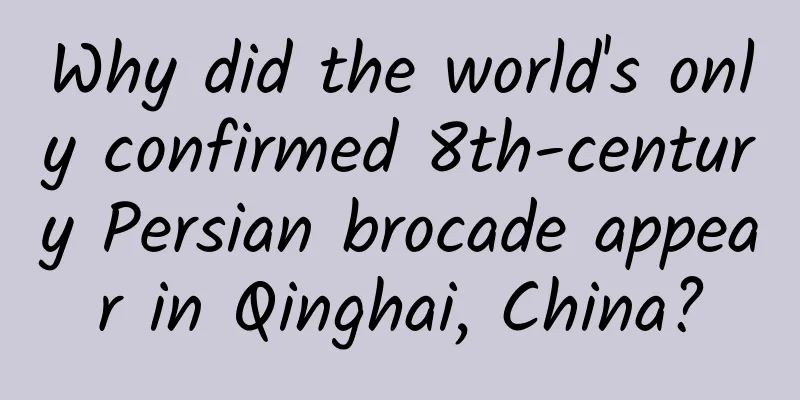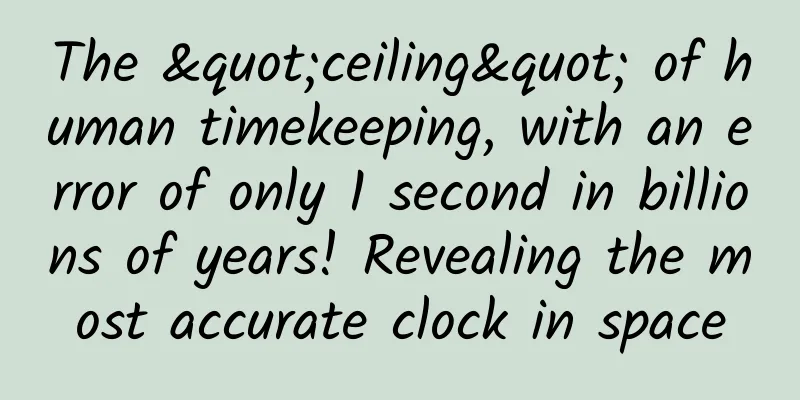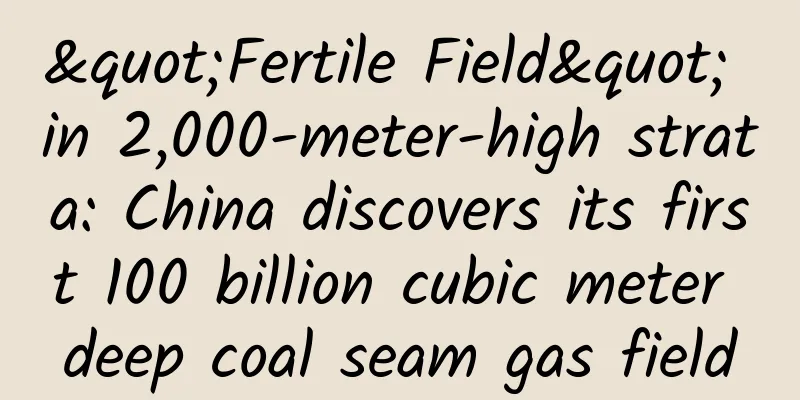Why did the world's only confirmed 8th-century Persian brocade appear in Qinghai, China?

|
Even in the Qinghai-Tibet Plateau, the "third pole of the world", the exchange of products, technology and ideas has never been interrupted, further proving that no culture is an island. Total number of characters: 2640 Estimated reading time: 8 minutes "From the 4th to the 7th century AD, there were wars in the Central Plains and the Hexi Corridor was blocked. Tuyuhun became the center connecting the Central Plains with Mobei, the Western Regions, the Qinghai-Tibet Plateau, India and other places. The Qinghai Road of the Silk Road began to flourish, and merchants and travelers from the east and the west often took this route, promoting cultural exchanges through trade." Han Jianhua, an associate researcher at the Institute of Archaeology, Chinese Academy of Social Sciences, said in an exclusive interview with China News Service's "East and West Questions" recently that after nearly 40 years of archaeological excavations, nearly 100 tombs have been excavated in the Reshui Tombs in Dulan, Qinghai, and the only confirmed 8th-century Persian brocade in the world has been unearthed. The shapes and decorative patterns of many cultural relics have a strong Sassanid, Sogdian and Central Asian style, proving that Dulan was an important node on the Qinghai Road of the Silk Road and a transit station for East-West trade. What cultural connotations do the relics in the Reshui Tombs contain? What enlightenment does the Qinghai Road of the Silk Road have on jointly building the “Belt and Road” and deepening cooperation among countries? Han Jianhua gave an in-depth interpretation of this. In May 2021, the third Qinghai-Tibet Plateau Ecological Civilization Construction Forum was held in Xining. Huo Wei, dean of the School of History and Culture of Sichuan University, believed that the "2018 Xuewei No. 1 Tomb of the Reshui Tombs in Dulan, Qinghai" was one of the important discoveries in China's frontier archaeology in recent years, witnessing the development of the ancient Silk Road. Photo by Zhang Tianfu, a reporter from China News Service The following is a summary of the interview transcript: China News Service: What is the unique value of the 8th century Persian brocade? What other "treasure" cultural relics have been unearthed from the Reshui Tombs, and what cultural connotations do they carry? Han Jianhua: The Reshui Tombs in Dulan, Qinghai were first discovered by the Qinghai Provincial Cultural Relics and Archaeology Team in 1982. During the excavation of the "Xuewei Tomb No. 1", archaeologists found a fragment of a brocade with inscriptions. Paleographers from the University of Göttingen in Germany confirmed that the brocade was in the Persian Sassanid era, and it is currently the only confirmed brocade with Persian inscriptions from the 8th century in the world. The image of the winged horse on the Tsushima brocade, which was unearthed at the same time as the Persian brocade, can also be seen on the hunting painting on the ceiling of Cave 249 in Mogao Grottoes. The winged beast originated from the ancient Assyrian region and was also seen in the art of the Sakas, Bactria, Greece and India, and was widely spread on the Silk Road. In the "Xuewei Tomb No. 1", more than 350 silk fragments were unearthed, which came from the Central Plains, Central Asia and West Asia. Its weaving techniques and patterns have multiple sources, proving that Dulan was an important transit point on the Silk Road. Among the new archaeological discoveries of the "2018 Xuewei No. 1 Tomb", the unearthed gold ornaments with human head and fish tail patterns and the floating ribbons behind the neck ornaments of the figures are typical decorative patterns of the Persian Sassanid Dynasty. In addition, conch shells, uncarbonized grape seeds, glass, agate, pearls, and corals were found around the coffin board of the main tomb and on the altar. They came from Kangguo, Tocharian Kingdom, Persia, Lion Kingdom and even farther away in the Mediterranean region, witnessing the long history of cultural exchanges between China and Central Asia, West Asia, and Europe. Gold containers and ornaments unearthed from the Xuewei No. 1 Tomb of the Reshui Tomb Group in Dulan, Qinghai Province in 2018. Photo courtesy of the Reshui Joint Archaeological Team of China News Service China News Service: Historically, what role did the Qinghai Road of the Silk Road play in economic, trade and cultural exchanges between the East and the West? Han Jianhua: "Records of the Grand Historian" records that when Zhang Qian was on a diplomatic mission to the Western Regions, he saw Qiong bamboo sticks and Shu cloth in Daxia. This proves that long before the "opening up of the sky", the East and the West had already conducted "point-to-point" exchanges through the Qinghai area, but a fixed route had not yet been formed. Since the Wei and Jin Dynasties, there have been wars in the Central Plains and the Hexi Corridor was blocked. At this time, the Tuyuhun Kingdom rose and grew on the grasslands at the junction of Gansu and Qinghai, becoming the center connecting the Central Plains with Mobei, the Western Regions, the Qinghai-Tibet Plateau, India and other places. There were smooth transportation routes to the east, south, west and north, and the "Qinghai Road" began to flourish. Most of the east-west business travelers took this route. The Tuyuhun people acted as "intermediaries" on the "Qinghai Road", exchanging horses for goods from the Central Plains and silk from Shu, and then exchanging them with countries in the Western Regions. According to historical records, the envoys to India, led by Northern Wei official Song Yun and monk Huisheng, relied on the protection, translation and guidance of the Tuyuhun when they entered the Western Regions. During the Liang Dynasty of the Southern Dynasties, the Qinghai Road became mature, with Tuyuhun as a relay station, and envoys were sent to pay tribute to countries in the Western Regions such as Qiuci, Persia, and Khotan. In 663 AD, Tubo destroyed Tuyuhun and unified the Qinghai-Tibet Plateau. At the end of the 7th century, the Tang, Tubo, and Dashi Empires confronted each other from east to west on the Eurasian continent. The role of the "Qinghai Road" changed from a "mediator" to a "support" for external expansion. Tubo used the agricultural and pastoral resources in Qinghai as a military guarantee and continued to expand its sphere of influence. It once controlled the Hexi Corridor, blocking the "artery" of the Tang Dynasty's external transportation, and then expanded to Central Asia and South Asia. China News Service reporter: Compared with the traditional Silk Road, why is the Qinghai Road less well known? In August 2018, at the Sand Sculpture Art Festival held in Lanzhou New District, large-scale sand sculptures of the Silk Road attracted tourists. Photo by Yang Yanmin, a reporter from China News Service Han Jianhua: First of all, Qinghai Road is a modern concept. Based on literature and archaeological discoveries, multiple regional transportation roads connecting the east and the west formed in Qinghai in different historical periods have gradually been recognized, and the academic community collectively refers to these roads as "Qinghai Road". Specifically, the "Records of the Grand Historian" records that when Zhang Qian returned to Chang'an, he "wanted to return from Qiangzhong". "Qiangzhong" refers to the area where the Qiang people lived in Qinghai. During the Wei, Jin, Southern and Northern Dynasties, the Hexi Corridor was blocked, highlighting the important role of the Qinghai Road: with Fuqi City built by Tuyuhun as the center, it connected Xiping (now Xining) and Jincheng (now Lanzhou) to the east; there were three roads to the northwest, leading to Zhangye, Dunhuang and Ruoqiang respectively. The route to Ruoqiang passed through Dulan, Golmud and Mangya; there was also the "Henan Road" that passed through Yizhou (now Chengdu) and all the way along the Yangtze River to Jiankang (Nanjing); in the Huangshui River Basin, there was also the "Huangzhong Road" that extended in all directions. During the Tubo period, going south through Dulan could connect with the Tang-Tibet Ancient Road and reach Lhasa. It can be seen that the Qinghai Road is not like the traditional Silk Road that connects the east and the west, but is composed of multiple regional transportation roads from different periods. After Zhang Qian "opened up the world", he opened up the traditional Silk Road with Chang'an as the starting point and reaching Central Asia and West Asia through the Hexi Corridor. At that time, the country was in a period of great unification, and the centralization of power was highly developed, providing external guarantees for the integrity, smoothness and stability of the road; and the Qinghai Road only became prominent after the Hexi Corridor was blocked. After the country was unified, the east-west transportation artery returned to the Hexi Corridor. The government consciously weakened the role of the Qinghai Road. For example, after conquering Tuyuhun, Emperor Yang of Sui toured the west from Qinghai to Zhangye and held the World Expo to expand the role of the Hexi Corridor. An aerial photo of the Jiayuguan Tower at the western end of the Hexi Corridor in Gansu Province in October 2019. Photo by Yang Yanmin, a reporter from China News Service Therefore, compared with the Hexi Corridor, Qinghai Road is the product of local separatist regimes, and its status is obvious, but its role is no less than that of the Hexi Corridor. In 1956, 76 Persian silver coins were unearthed in the Xining City God Temple. At that time, archaeologist Xia Nai pointed out that the role of Qinghai Road in the 5th century exceeded that of the Hexi Corridor. China News Service: What research have foreign scholars done on the Qinghai Road of the Silk Road? Han Jianhua: As early as the 1820s, German and Russian explorers had left their footprints on the Qinghai Road. In the 1920s, Germans discovered caves containing silk and gold artifacts in the Kaoxiaotu area near Dulan. In addition, French scholar Chavannes and Swiss Dr. Ami Heller have both conducted research on the Qinghai Road from the perspective of cultural relics. Based on ancient Chinese historical documents, Japanese scholar Matsuda Hisanami once made a relatively detailed discussion of the Qinghai Road in "A Study of Tuyuhun's Envoys": "From the fifth to the seventh century AD, the Tuyuhun Kingdom, with Qinghai as its center, frequently sent caravans to Guanzhong, or Hexi, or through the latter to Ordos and Mongolia, or to Shu, or through these places to the Southern Dynasties. At the same time, it maintained deep contacts with the Tibetan Plateau and the Tarim Basin, and played an important role in the east-west transportation as a transit point for trade in the Western Regions." He believed that the "Qinghai Road" and the "Hexi Road" existed in parallel, and compared the roles of the two. These views have provided certain references and help for domestic research. China News Service: In your opinion, what implications do the historical evolution and archaeological findings of the Qinghai Road of the Silk Road have for continuing the "New Silk Road Friendship" between the ancient civilizations of the East and the West? Han Jianhua: When Qinghai Dao played an important role in history, it was the peak of the integration of ethnic groups in the northwest. Many tribes and ethnic groups such as Tubo, Tuyuhun, Qiang, Di, and Rong frequently interacted and intermarried, and gradually became "you in me and me in you". The naturally formed cultural identity laid the foundation for the diversity and unity of the Chinese nation and the blood inheritance. The profound historical accumulation is the source of cultural confidence. Just as in the past, the Tuyuhun people did not deliberately open up a route connecting the East and the West, the cultures of the Western Regions and the Central Plains gradually merged through business exchanges and trade; now, the excellent traditional culture of the Chinese nation is also spreading outward through the "Belt and Road" economic and trade cooperation, and is subtly integrated with the cultures of various countries to enhance mutual recognition. In May 2015, a roundtable meeting on economic and trade cooperation between Qinghai Province and countries along the Belt and Road was held in Xining, where participants discussed and negotiated on strengthening economic and trade exchanges and cultural exchanges. Photo by Sun Rui, a reporter from China News Service Archaeological excavations have helped the Qinghai Road move from documentary research to empirical evidence. Cultural relics, as a material manifestation, have witnessed the long-standing friendship among the countries along the Silk Road, and have allowed people to transcend national borders and evoke common memories. Even in the Qinghai-Tibet Plateau, the "third pole of the world", the exchange of products, technology, and ideas has never been cut off, further proving that no culture is an isolated island, and that all cultures need to understand and tolerate each other, seek common ground while reserving differences, and coexist peacefully. About the interviewee: Photo provided by the interviewee Han Jianhua is an associate researcher at the Institute of Archaeology, Chinese Academy of Social Sciences, a master's supervisor, a member of the Three Kingdoms, Sui and Tang Professional Committee of the Chinese Archaeological Society, a member of the Song, Liao, Jin, Yuan, Ming and Qing Professional Committee, and a director of the Chinese Ancient Capital Society. He is engaged in archaeological excavation and research on Luoyang City in the Sui and Tang Dynasties, with a research direction of archaeological research on capital cities from the Han, Tang and Song Dynasties. He presided over a National Social Science Fund project and served as the sub-project leader of a major National Social Science Fund project. Since 2019, he has presided over the archaeological excavation of the 2018 Xuewei No. 1 Tomb in the Reshui Tombs in Dulan, Qinghai. In 2019 and 2020, it was selected as a major project of the "Archaeology China" of the State Administration of Cultural Heritage. In 2020, it won the Important Archaeological Discovery of the Chinese Academy of Social Sciences and the Top Ten New Discoveries in National Archaeology. Source: China News Service (CNS1952) China News Service reporter: Pan Yujie Editor: Wang Yimeng Editor: Song Fangcan |
>>: "One seed changes the world" - A record of the "light chasers" at the 18th parallel north
Recommend
"Yiwenzijue": The top ten buzzwords in 2023 released artificial intelligence big model, conspicuous bag, etc.
2023 is coming to an end. In the Internet era, a ...
How much does it cost to develop a women’s clothing mini program in Binzhou?
How much is the quotation for Binzhou women's...
How effective is Momo advertising? Explanation of Momo advertising!
In the past two years, mobile Internet has been e...
Can hair dyeing cause cancer and hair loss? What should I do if manicures damage my nails? West China experts explain it in one article!
Only 3 days left until the holiday! On the eve of...
The best Android system ever: Talking about the past and present of CyanogenMod
At the end of 2016, the well-known third-party An...
If you often feel "panic", the problem may not only be in your heart! 5 situations to be vigilant
I believe everyone is familiar with "panic&q...
Short video content operation trends in 2020!
2019 can be regarded as the coldest year in the a...
Because of their strange appearance, Nepenthes are being picked crazily! | Nature Trumpet
Welcome to the 9th issue of the Nature Trumpet co...
91 Ten Articles: Tesla's brake failure occurred again in Hangzhou, BMW will launch a hydrogen fuel cell X5 crossover
1. Xpeng Motors' first quarter financial repo...
Why did Oppenheimer become the leader of the Manhattan Project?
Popular Science Times reporter Chen Jie Nolan'...
Robots and artificial intelligence combine to realize the robots of your imagination
The robots that people imagine are the kind that ...
China's diving "Dream Team" won the first and second place! Do you know how to scientifically suppress splashes in diving?
On March 4, Beijing time, in the women's 10-m...
5 tips for event management!
Event operation is a type of operation. The autho...
Brand Marketing Strategy: How does "flirting culture" win hearts and attract traffic?
In the Japanese drama "Quartet", which ...
Ideas for setting up and optimizing information flow accounts, super practical stuff!
The development of bidding models in Internet adv...









